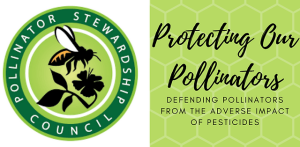Newfoundland has New Found Parasite-Free Location
From PSU News
An international team of researchers has discovered honey bee colonies in Newfoundland, Canada, that are free of the invasive parasites that affect honey bees elsewhere in the world. The populations offer a unique opportunity to investigate honey bee health, both with and without interfering interactions from parasites.
“Invasive parasites—such as Nosema ceranae, a fungus, and Varroa destructor, a mite—have incurred heavy economic penalties on the honey bee industry via colony losses and reduced productivity of surviving colonies, and both parasites threaten global food security because of reduced pollination services to agriculture,” said Nancy Ostiguy, associate professor of entomology, Penn State. “The extent to which these detriments are attributable to specific parasite species is difficult to assess, however, because of the occurrence of multiple parasites within honey bees. Studying the effects of these parasites is even more challenging because few areas in the world have western honey bee colonies that are free of invasive parasites.”
Ostiguy and her colleagues found a geographical area in Newfoundland, in which a number of important invasive honey bee parasites, including Varroa destructor and Nosema ceranae, do not exist. The researchers used molecular techniques to test for the presence of viruses and Nosema ceranae in honey bee colonies managed by beekeepers. They used a visual screening method to search for insect parasites, including Varroa destructor. They then assessed the colonies for visual signs of illness and related the illness data with the presence or absence of parasites or viruses.
In the Newfoundland colonies, the researchers found the parasite Nosema apis, the species that has been displaced by Nosema ceranae elsewhere, and the pathogens, black queen cell virus and deformed wing virus.
“Despite the presence of these parasites and pathogens, colony losses in Newfoundland are very low—similar to the mortality rates reported in the United States before the introduction of Varroa destructor,” said Ostiguy.
The team found that the Newfoundland bees, which were otherwise healthy, suffered from K-wing, a descriptive condition of the asymmetrical positioning of the wings that previously was not known to be associated with any identifiable pathogen. The researchers found a significant positive association between the presence of black queen cell virus and K-wing.
“Interestingly, the only clinical symptom previously associated with black queen cell virus is death of honey bee broods,” said Ostiguy.
In addition, the scientists found a significant negative association between black queen cell virus and deformed wing virus.
“This result is interesting as we do not see the same negative association between these two viruses in colonies infested with Varroa destructor,” said Ostiguy. “In colonies with Varroa destructor, frequently there is a positive association between the two viruses and co-infection in the same bee is common.”
The results appear in a recent issue of PLOS ONE.
According to Ostiguy, the team will continue to investigate the relationships between various pathogens and parasites of honey bees, along with various stressors, such as pesticide exposure, with the goal of providing information to help keep honey bees healthy.
“Our ability to find European honey bee\ populations free of invasive parasites is shrinking,” she said. “These parasite-free populations in Newfoundland are essential for our ability to understand the interactions among various parasites and pathogens of honey bees.”
Read more at: http://phys.org/news/2014-07-parasite-free-honey-bees-enable-bee.html#jCp








